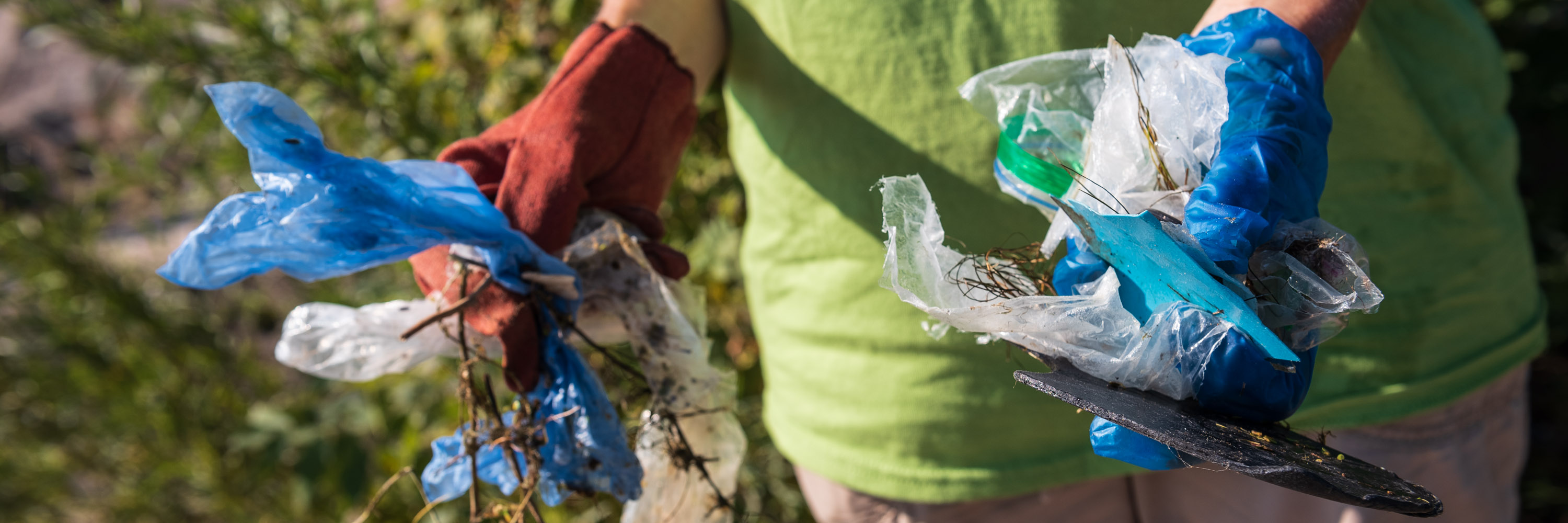You Can Help
Before we can solve a problem, we must first know that it exists. I've compiled a list of resources that have been useful to me as I've worked on this project — hopefully, you find them useful, too.
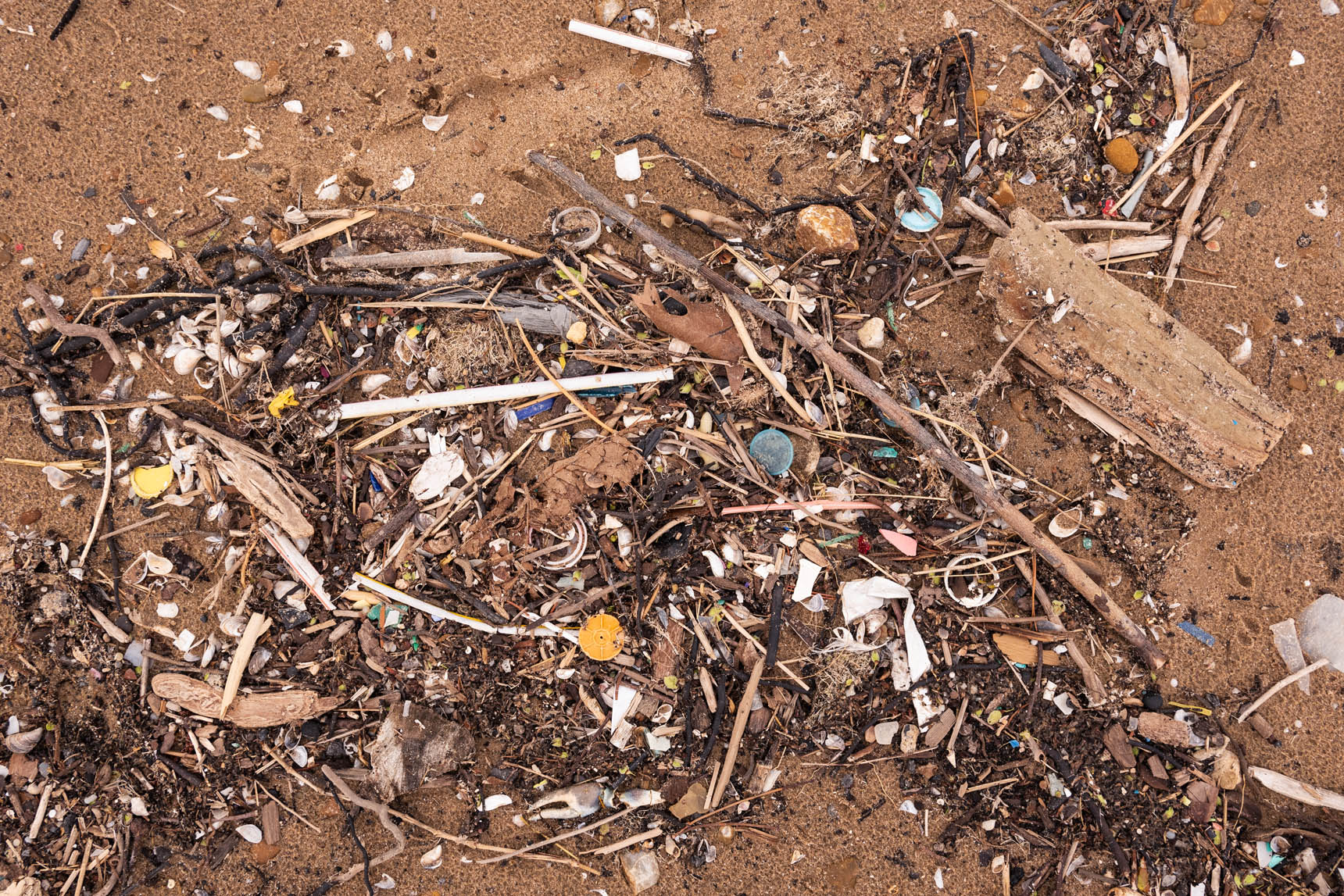
A pile of plastic and microplastic fragments that washed ashore before the start of beach cleaning season (May 13, 2018).
Introduction to Plastic Pollution
- 10 Shocking Facts About Plastic: An introductory slideshow of images and facts about plastic pollution.
- View Source: National Geographic
- Microplastics: Microplastics are small plastic pieces less than five millimeters long which can be harmful to our oceans and aquatic life.
- View Source: National Oceanic and Atmospheric Administration
- Beer, Drinking Water And Fish: Tiny Plastic Is Everywhere "They're in oceans, rivers and lakes. They're also in soil." ... "even more concerning, microplastics are in drinking water. In beer. In sea salt. In fish and shellfish."
- View Source: National Public Radio
- In a first, microplastics found in human poop: As microplastics permeate remote places and species around the globe, people are no exception.
- View Source: National Geographic
- More Recycling Won't Solve Plastic Pollution: It’s a lie that wasteful consumers cause the problem and that changing our individual habits can fix it
- View Source: Scientific American
- The Story of Microfibers: Most of us wear synthetic fabrics like polyester every day. Our dress shirts, yoga pants, fleeces, and even underwear are all increasingly made of synthetic materials — plastic, in fact. But these synthetic fabrics, from which 60% of all clothing on earth is made, have a big hidden problem: when they’re washed, they release tiny plastic bits — called microfibers — that flow down our drains, through water treatment plants, and out into our rivers, lakes and oceans by the billions.
- View Source: Story of Stuff Video
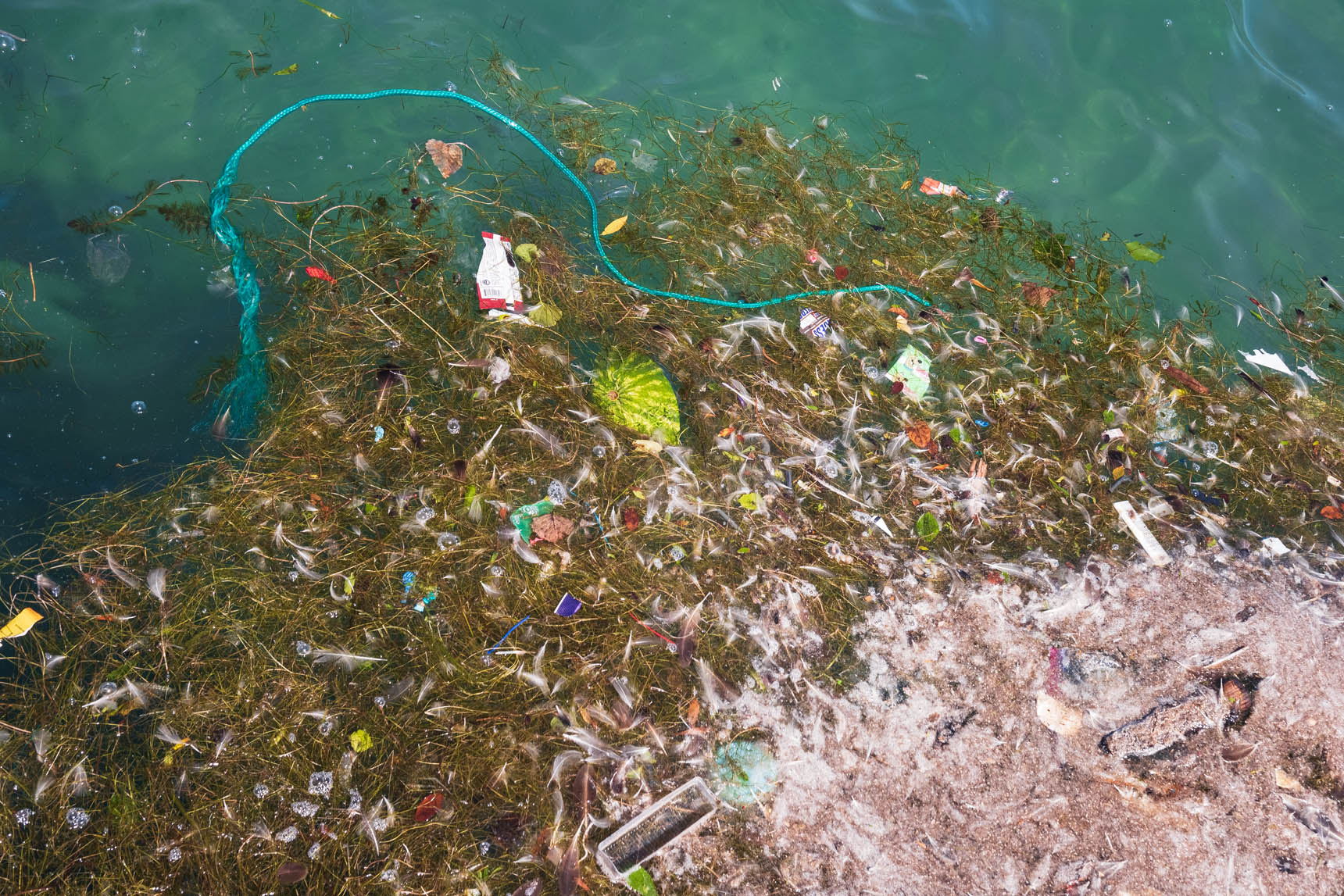
Plastic waste floating in Lake Michigan (July 8, 2018).
Plastic Pollution in the Great Lakes
- 5 Ways Plastic Pollution is Different in the Great Lakes: Ocean Plastic vs. Great Lakes Plastic Pollution
- View Source: Alliance for the Great Lakes
- 2018 State of the Great Lakes - The Perils of Micro Pollution: Dr. Sherri A. Mason gives a talk about plastic pollution and microplastics in the Great Lakes.
- View Source: The City Club of Cleveland
- Plastic-Free Great Lakes: An Advocacy Toolkit to Make a Difference In Your Community
- View Source: Alliance for the Great Lakes
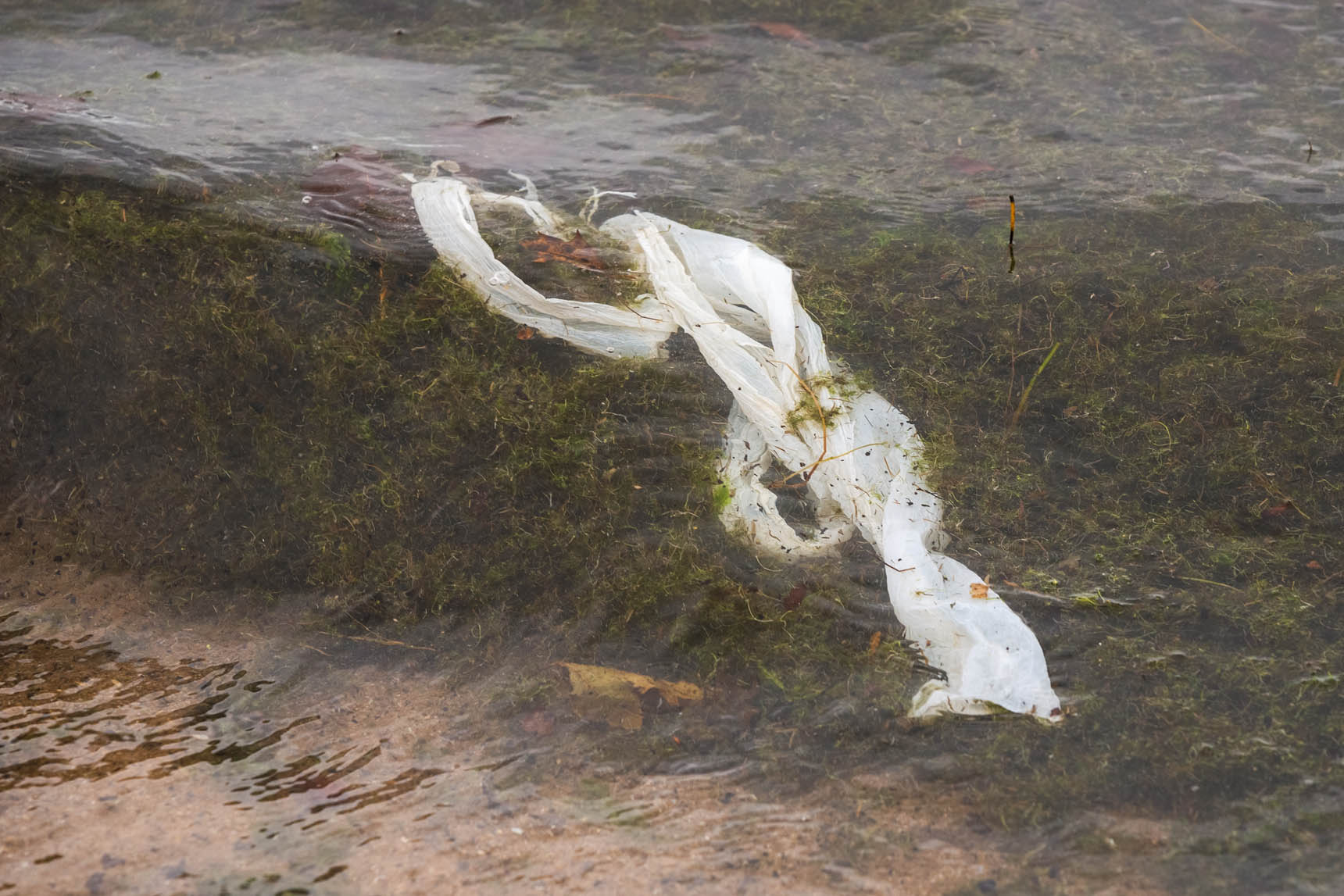
A plastic bag in the waves of Lake Michigan (October 2, 2018)
About the Great Lakes
- What’s So Great About the Great Lakes? The North American Great Lakes — Huron, Ontario, Michigan, Erie, and Superior — are so big that they border 8 states and contain 23 quadrillion liters of water. They span forest, grassland, and wetland habitats, supporting a region that’s home to 3,500 species. But how did such a vast and unique geological feature come to be?
- View Source: TED Ed Animated Video
- The Story of the Great Lakes in 8 Maps: The book Third Coast Atlas seeks to illuminate the Great Lakes — America’s “third coast” — through maps, plans, photos, and more.
- View Source: Citylab.com
- Great Lakes Ecosystem: The Great Lakes represent approximately 20 percent of the world’s fresh surface water and provide habitat for over 100 species of globally rare plants and animals. Additionally, 42 million people depend on the Great Lakes for their drinking water. In recent years, the lakes have been impacted due to invasive species, contaminants, land use decisions, and more.
- View Source: Illinois-Indiana Sea Grant
- About the Great Lakes: Facts and information about the Great Lakes
- View Source: Wikipedia
- About the Great Lakes Region: Facts and information about the Great Lakes Region
- View Source: Wikipedia
- NOAA/GLERL: Great Lakes Surface Currents Map
- View Source: NOAA's Great Lakes Environmental Research Laboratory
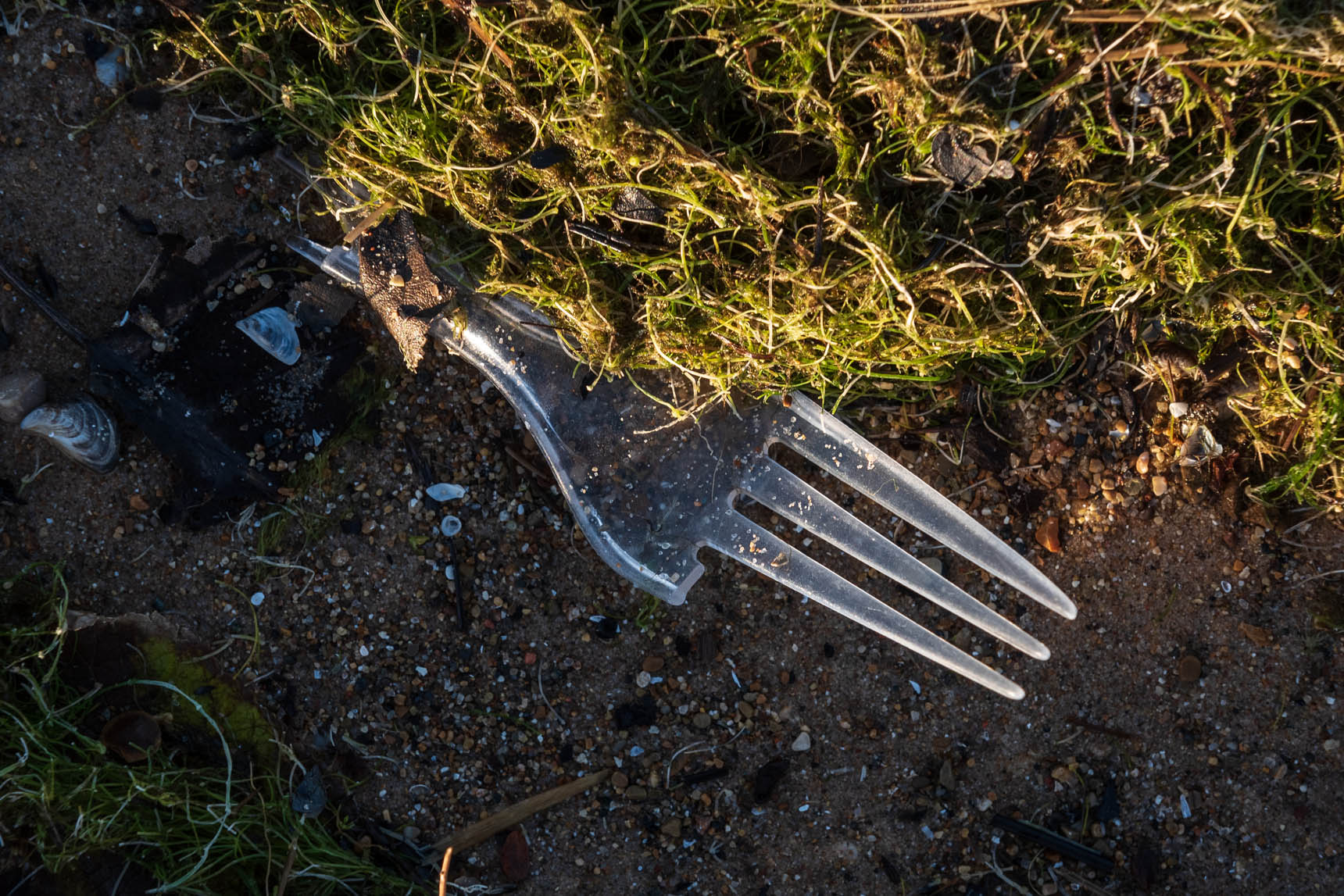
Washed ashore: a single-use plastic fork along the coastline of Lake Michigan (October 22, 2018).
Everyday Involvement
Though some companies are mentioned by name, these are not endorsements — nor do I receive any compensation for listing them. Use these products and companies as a guide, and find the best option available for you and your family.
The main point is this: if you can afford it, there are alternatives to plastic products.
- Reduction Idea: Replace your plastic toothbrush with a bamboo toothbrush. The bristles will most likely be made from a type of plastic material, but the handle will be bamboo (and bamboo is compostable).
- Where to start: Brush with Bamboo or Wowe Lifestyle
- Reduction Idea: Replace your liquid shampoo and conditioner bottles with a package-free, solid product.
- Where to start: Lush USA or Chagrin Valley Soap & Salve Co.
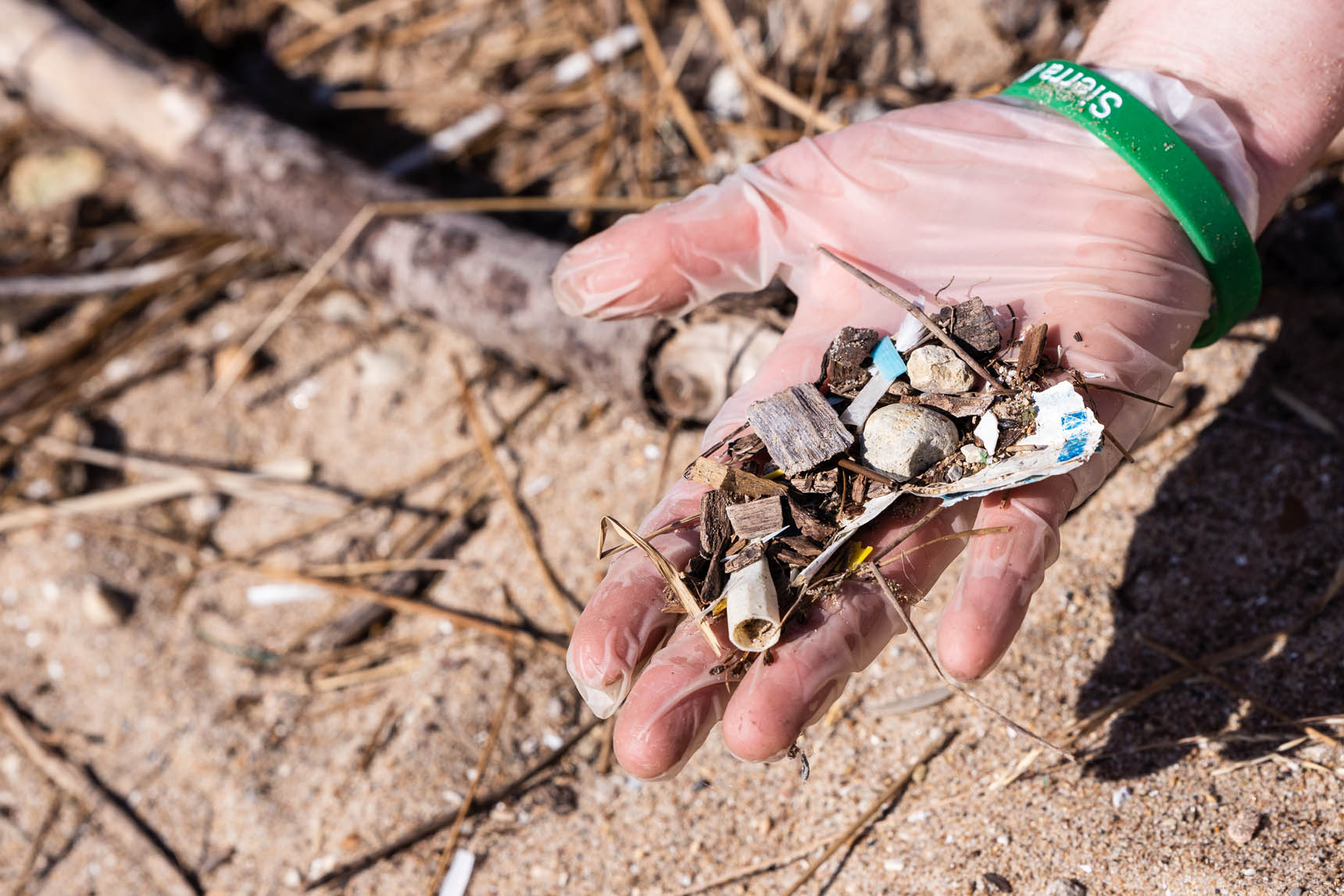
A volunteer cleans up plastic waste at Montrose Beach in Chicago, Illinois (September 15, 2018).
Helpful Organizations
If you're looking to become more involved, whether it be with the Great Lakes or other environmental causes, here is a partial list of helpful organizations that have local impact.
- Alliance for the Great Lakes The Alliance for the Great Lakes works to protect the Great Lakes for today and tomorrow. We involve tens of thousands of people each year in advocacy, volunteering, education, and research to ensure the lakes are healthy and safe for all.
- Visit their website
- Fresh Water Lab The Freshwater Lab is an initiative to communicate Great Lakes water issues to the general public, create tools to visualize the current state and future scenarios of water sources, engage unaffiliated groups in water planning, and train a new generation of Great Lakes leaders. As we focus on the Great Lakes basin, we also reach outward to build relationships with water stewards from other parts of the world.
- Visit their website
- Great Lakes Commission The Great Lakes Commission represents, advises and assists its member states and provinces by fostering dialogue, developing consensus, facilitating collaboration and speaking with a unified voice to advance collective interests and responsibilities to promote economic prosperity and environmental protection and to achieve the balanced and sustainable use of Great Lakes – St. Lawrence River basin water resources.
- Visit their website
- Great Lakes Fishery Commission While the lakes fall under the jurisdictions of two nations, eight states, one province, and several tribes, the fishery resources do not observe political boundaries. Canada and the United States recognized decades ago that the best way to manage and sustain the fishery is through continuous, binational cooperation.
- Visit their website
- Great Lakes and St. Lawrence Cities Initiative Mayors Protecting and Restoring the Great Lakes and the St. Lawrence River.
- Visit their website
- The Great Lakes St. Lawrence Governors & Premiers The Conference of Great Lakes and St. Lawrence Governors and Premiers unites the chief executives from Illinois, Indiana, Michigan, Minnesota, New York, Ohio, Ontario, Pennsylvania, Québec and Wisconsin. The Governors and Premiers work as equal partners to grow the region’s $6 trillion economy and protect the world’s largest system of surface fresh water.
- Visit their website
- Sierra Club From the shores of Lake Michigan to the forests of the Shawnee, Illinois is a state rich in natural beauty. We are committed to protecting the diversity of our state's natural resources through campaigns on conservation, energy issues, clean water, and transportation. Join us and help us protect the water, air, land and wildlife in our beautiful state.
- The National Organization — The Illinois Chapter — The Chicago Group
- Natural Resources Defense Council We combine the power of more than three million members and online activists with the expertise of some 600 scientists, lawyers, and policy advocates across the globe to ensure the rights of all people to the air, the water, and the wild.
- Visit their website
- Openlands Founded in 1963 as a program of the Welfare Council of Metropolitan Chicago, Openlands is one of the oldest metropolitan conservation organizations in the nation and the only such group with a regional scope in the greater Chicago region. Openlands has helped protect more than 55,000 acres of land for public parks and forest preserves, wildlife refuges, land and water greenway corridors, urban farms, and community gardens.
- Visit their website
- Plastic Pollution Coalition is a growing global alliance of individuals, organizations, businesses, and policymakers working toward a world free of plastic pollution and its toxic impacts on humans, animals, waterways and oceans, and the environment.
- Visit their website
